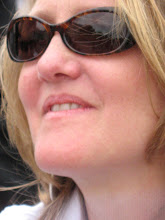 On the south side of the river Seine, across the Pont de la Concorde and directly facing its twin, the church of the Madeleine, stands the Assemblée Nationale, one of two houses of the French parliament. But before the Assemblée was a temple-fronted, neo-classical building, where the laws of government are discussed and prepared before passing to the French Senat and President, it was a body of individuals, and a rogue body at that...
On the south side of the river Seine, across the Pont de la Concorde and directly facing its twin, the church of the Madeleine, stands the Assemblée Nationale, one of two houses of the French parliament. But before the Assemblée was a temple-fronted, neo-classical building, where the laws of government are discussed and prepared before passing to the French Senat and President, it was a body of individuals, and a rogue body at that... 1789: France faced a deep and seemingly intractable economic crisis. Peasants were starving; the monarchy was out of money; and the rich refused to be taxed. To his credit, King Louis XVI recognized he needed help to resolve the situation. He called for a meeting of the Estates General – equal numbers of representatives from the nobility, the clergy, and everyone else: a group referred to as the Third Estate.
1789: France faced a deep and seemingly intractable economic crisis. Peasants were starving; the monarchy was out of money; and the rich refused to be taxed. To his credit, King Louis XVI recognized he needed help to resolve the situation. He called for a meeting of the Estates General – equal numbers of representatives from the nobility, the clergy, and everyone else: a group referred to as the Third Estate.No French King had convened the Estates General for 150 years. So, delegates had to be selected from all corners of the country. In June, 12,000 representatives arrived at Versailles, each sporting the dress of their social class: the Third Estate wore plain black suits and three corner hats; the nobility were bedecked in rich silks and colorful plumes; the clergy shouldered their traditional violet vestments. They came as one to seek a solution to their country’s financial problems. They came to usher in a new, golden age for France. They carried with them the hope and optimism of the entire French nation. Confidence reigned.
 But it quickly soured. The Third Estate demanded more voting power. They did, after all, represent 96% of the French population, but they had only as many votes as the clergy and nobility. And these two voted always with the monarchy. The demand of the Third Estate did not go over well with the King. He locked them out of the meeting!
But it quickly soured. The Third Estate demanded more voting power. They did, after all, represent 96% of the French population, but they had only as many votes as the clergy and nobility. And these two voted always with the monarchy. The demand of the Third Estate did not go over well with the King. He locked them out of the meeting!With the hopes and dreams of the entire nation weighing heavily on their shoulders, the Third Estate refused to leave Versailles. They held their own meeting in the king’s indoor tennis court, the Jeu de Paume, the only place big enough to accommodate their numbers and keep them out of the storm that raged like their enlightened fury with the 800-year old absolute monarchy.
The Third Estate delegates proclaimed themselves “the true representatives of the French people.” They named themselves The National Assembly, "an assembly not of the Estates but of the People”: France’s new government. Many members of the nobility and the clergy left the king's meeting to join them.
Thus began the French Revolution (1789-99)...
****
Stay tuned as we trace the events of June 1789 that led up to the July 14th sacking of the Bastille prison…
Images:
Photograph of the Assemblée Nationale at night, courtesy of Wikimedia Commons.
Painting of King Louis XVI before the revolution, courtesy of Wikimedia Commons.
"The People under the Ancien Regime," courtesy of http://chnm.gmu.edu/revolution/.
Source:
Towle, Sarah B. Time Traveler Paris Tours: Beware Madame La Guillotine, in development.

No comments:
Post a Comment